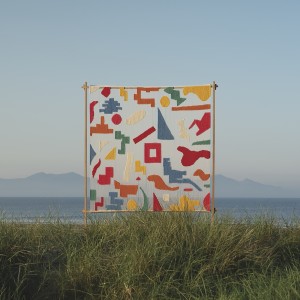Matthew Halsall
An Ever Changing View

About this item
Halsall who has been hailed as one of the leading figures of the UK jazz renaissance has never seen himself as part of any one sound or scene: he builds his own sonic universe instead. An Ever Changing View finds him at his most experimental yet, once again expanding his sound and production techniques to create his unique brand of deeply meditative music.
During the album's creation, he was staying in both a beautiful architect’s house with breath-taking sea views and a striking modernist house, where he composed what he saw “like a landscape painting”. In these new environments, Halsall wanted to capture “the feeling of openness and escapism” and to approach making music again from scratch. “I hit the reset button and wanted to have complete musical freedom,” he says. “It was a real exploration of sound.”
It was hearing jazz on the dancefloor as a teenager that first opened up new possibilities in Halsall’s mind and his music has long drawn on his love for the spiritual jazz of Alice Coltrane and Pharoah Sanders and contemporary electronica from the likes of Warp Records and Ninja Tune. An Ever Changing View melds those forms in a way that feels heady and, at times, even otherworldly. One of the album’s starting points was Halsall’s ever-expanding box of percussion, from congas and kalimba to various clusters of seeds, bells and chimes, which he sampled and looped to use as a foundation for the songs – a first for him and his band. Elevating, charming, totally modern jazz tracks jostle with deft warm magic realism; and laid back grooves with hand percussion, deep bass and the gorgeous glisten of the Fender Rhodes meet hip-hop beats. Halsall himself sparkles, illuminating his beautiful tapestries of sound with lithe, glistening elegiac trumpet.
An Ever Changing View comes in a package as striking as the music, with handmade fonts designed by Ian Anderson of The Designers Republic and the specially commissioned tapestry by artist Sara Kelly is a stunning and harmonious complement to the record's sound.
STAFF COMMENTS
Martin says: That Matthew Halsall’s music takes as its starting point the meditative end of Pharoah Sanders and Alice Coltrane is no accident. His final two years of education were spent at the Maharishi school, where his experience of meditation led to a deeper immersion in Buddhism, a philosophy that permeates and shapes the nature of his work.
This is his ninth solo album, which in itself presents the perennial problem that dogs most artists; how to keep the originality and inspiration that accompany approaching a blank canvas and not disappear into a spiral of ever diminishing returns by clinging too tightly to the only formula they allow themselves to know. While it is true that the flow of his work has remained consistent, the individual components and musicians have not. Almost all of the original members of The Gondwana Orchestra have moved on to the burgeoning London jazz scene, the silver lining to this being their replacements have brought their own influence. Halsall has also an ever increasing collection of percussion instruments to draw on and use as a base for his music - in this case kalimba, glockenspiel and marimba amongst others, over which his serene trumpet soars softly overhead. It’s a testament to Halsall’s willingness to evolve that his music still sounds so fresh. He’s produced an exquisite, peaceful gem, as rich as any of his previous work, overflowing with warmth, intricacy and gentle charm.
On one level the album’s title could refer to the changes in landscape travelling between Northumberland and North Wales, where the album was recorded, But it also nods to the Buddhist concept of impermanence, the idea that it’s a property of the universe that nothing stays the same. An ever changing view.
TRACK LISTING
Tracing Nature
Water Street
An Ever Changing View
Calder Shapes
Mountains, Trees And Seas
Field Of Vision
Jewels
Sunlight Reflection
Natural Movement
Triangles In The Sky
